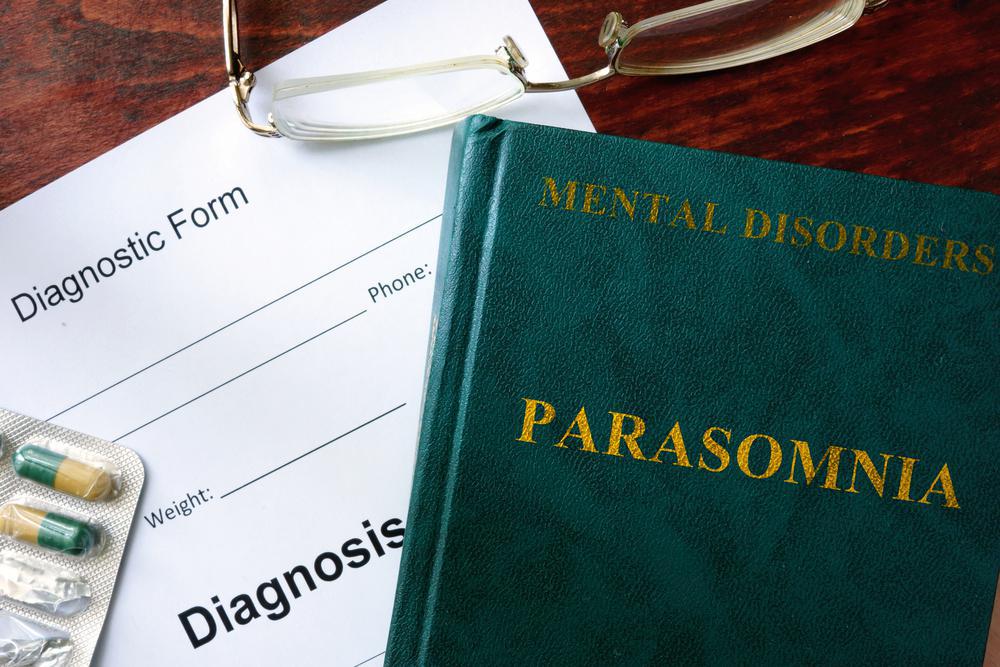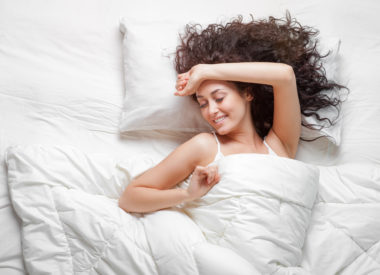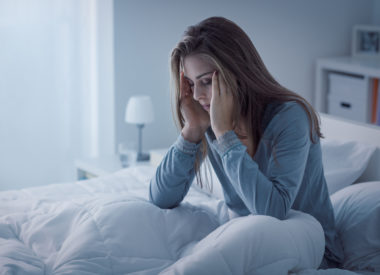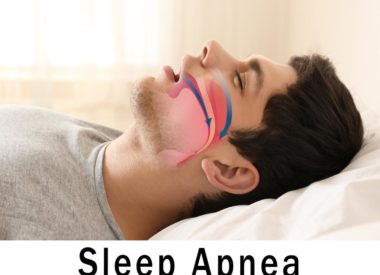What is a Parasomnia? Things that go BUMP in the night!
What is parasomnia?
This category of unusual sleep disorders generally occurs during arousals between sleep stages. Its behaviors are considered disruptive or undesirable, even dangerous, and may lead to physical harm to either the person suffering the disorder or their bed partner.
Imagine someone suddenly jumping out of bed, shouting orders… or someone (a child or an adult) having terrible nightmares that physically consume them, and yet they don’t remember a thing in the morning.
Overlap Theory
Two of sleep medicine’s leading experts in the field of parasomnia research Dr. Matt Mahowald and Dr. Carlos Schenck have created a way to explain why these strange behaviors occur.
The Overlap Theory describes an “overlap” between the state of wakefulness and the two main stages of sleep: nonREM sleep and REM sleep.
-
In the transition between wakefulness and nonREM sleep, opportunities exist for nonREM parasomnias to occur.
-
When there is a transition between wakefulness and REM sleep, REM-related parasomnias can take place.
-
Finally, a third area of overlap exists between all three states:status dissociatus a shift between consciousness and unconsciousness which has no relation to established patterns of sleep.
NonREM sleep parasomnias
These occur in the transition between wakefulness and (usually) the nonREM stage known as stage 3 or deep (delta) sleep.
Confusional arousal
Just as it sounds, a confusional arousal gives the appearance of sluggish conscious behavior, similar to the blunted actions and alertness of someone who is inebriated.This is why it’s also referred to as sleep inertia or sleep drunkenness.
Confusional arousal may be thought of asa form of sleepwalking while still in bed. It occurs in transitions following early stages of deep sleep. Children experience confusional arousal, but generally grow out of it. Adult variations of this parasomnia may still persist, however.
Sleepwalking
People who sleepwalk give the appearance of being alert, yet they are actually asleep. They generally have no memory of their actions the following morning. This kind of parasomnia takes place during stage 3sleep and can vary in the complexity and duration of its presentation.
Children most commonly exhibit sleepwalking behavior, but it can occur in all ages and does seem to be a family trait. Triggers for sleepwalking may include stress, anxiety, epileptic behaviors, or excessive use of alcohol.
Concerns about sleepwalkers usually center on their safety and well-being during episodes, as they are unaware of objects, even extremes in temperature or noise which normally awaken others.
A recently highlighted form of sleepwalking is sexsomnia (also called sleep walking sex or sleep sex). It is usually described as a parasomnia that occurs during sleepwalking, though most sleep physicians classify it as a form of confusion arousal. People who exhibit this behavior aren’t aware of it. It mostly occurs following periods of stress or sleep deprivation.
Sleep terrors
Unlike nightmares, sleep terrors (also called night terrors or pavor nocturnus) awaken a person abruptly, yet they remain in a state of confusion, typically unable to communicate intense feelings of terror. These “waking nightmares” can last as long as 15 minutes; people who suffer from them often have no memory of the experience in the morning.
These episodes are common in children between the ages of 4 and 12. About 30 percent of adults experience them as well; in these cases, a large percentage of sufferers also have a history or current diagnosis of bipolar disorder, anxiety, or depression.
Those who suffer from night terrors can be a danger to themselves and others due to their intense emotional behaviors while having them.
Sleep related eating disorders
For some people, partial awakenings at night can lead to unusual sleep eating behaviors. These episodes take place during arousals following deep sleep.
People who suffer from sleep related eating disorders (SRED) may eat an entire package of raw bacon or cook up food on the stove and eat it without ever having a memory of the activity.
This can be disconcerting due to safety issues surrounding the foods consumed, as well as the possibility of injury from using sharp kitchen tools or high-heat appliances while still asleep.
REM sleep parasomnias
As the title suggests, these occur in the transitions between wakefulness and REM stage sleep.
REM sleep behavior disorder
The stand-up comic, Mike Birbiglia, brought nationwide attention to this REM sleep parasomnia with the release of his biographical film,Sleepwalk With Me, in 2012. Though the film is humorous (given the nature of its director, Birbiglia), it also gives an honest portrayal of REM sleep behavior disorder (RBD).
People with RBD physically act out their dreams in often violent fashion despite the fact that, while in the dream state, the body should be in a state of temporary, intentionalatonia, or paralysis. Unlike sleepwalking, which is a nonREM parasomnia, RBD occurs only during REM sleep transitions.
Older men typically suffer from RBD, but it can happen in women and younger people as well. It’s important to identify RBD, as it has been shown to be related to other neurological conditions.
Recurrent isolated sleep paralysis
This parasomnia also has been a hot subject in the mainstream of late, thanks to the release of a recent documentary,The Nightmare, which endeavors to capture the frightening experiences of people with isolated sleep paralysis.
Sufferers are unable to move their arms, legs, or most other parts of the body during the moments before or after they sleep. It is estimated that as many as50 percent of people will experience sleep paralysis at least once in their lifetime.
This paralysis can be caused by irregular sleep-wake schedules and is also a feature of the central disorder of hypersomnia known as narcolepsy. While sleep paralysis is not inherently harmful, it is a terrifying experience which fortunately does not last more than a few minutes.
Nightmares
These vivid nocturnal episodes stir intense feelings of emotion, fear, and anxiety. People awakened from REM sleep while experiencing nightmares can generally offer detailed narratives about their dream content. It can be difficult to return to sleep after having a nightmare because of the flood of stress hormones that nightmares can bring.
Nightmares usually occur during REM sleep, but may also manifest in nonREM in people who suffer from trauma. Nightmares, overall, have many causes, including stress, anxiety, illness, or the adverse side effects of medication. If nightmares happen more than once a week or prevent you from getting quality sleep, it’s advised that you speak with your physician.
Other parasomnias
There are a few other forms of uncommon parasomnia worth highlighting:
-
Exploding Head Syndrome: Researchers don’t quite know what causes this unusual parasomnia, in which a loud, even violent, noise goes off inside your head, disturbing you just as you fall asleep. It could sound like a gunshot, a loud bang, an exploding bomb, or a clash of cymbals, and it could be accompanied by a flash of light or a muscle spasm.
People who experience this parasomnia believe they are suffering from stroke or aneurysm. It can happen very rarely, or as frequently as many times over a single night.
-
Sleep hallucinations:These may accompany an experience in sleep paralysis. Sleep hallucinations are, as the name implies, imagined events that seem very real and which occur at the edges of sleep.They are typically visual in nature, but they may involve two or more of the senses.
These episodes can be frightening because they distort your sense of reality at a time when you are unsure whether you are asleep or awake.
It’s important to note that sleep hallucinations which happen during the day are considered symptomatic of narcolepsy.
-
Enuresis:Also known as bedwetting, enuresis makes it impossible for the sleeper to maintain control over urinary function during sleep.Primary enuresis happens in childhood, whereas secondary enuresis develops after a long period of controlled urinary function ends in relapse.It is typically caused by medical conditions like diabetes and may have a relationship to undiagnosed obstructive sleep apnea.
If you’ve had experiences with parasomnia behaviors, either yours or those of someone you love, it’s important to have them checked out. Each form of parasomnia has its own specific approach to treatment; some require urgency in the best interests of both patients and their bed partners. Getting a clear diagnosis is the first step, but it can’t happen without an assessment from a sleep professional.
Sources:
American Academy of Sleep Medicine
American Association of Sleep Technologists
Brigham and Womens Hospital
The Cleveland Clinic
International Classification of Sleep Disorders, 3rd Ed.
Sleep Forensic Medicine



